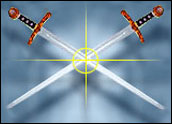
Thomas Edison and Nikola Tesla have a lot in common with Apple, Google, HTC, Motorola, and Research In Motion. They are all warriors in the ongoing war to see who can amass the largest number of the most lucrative technology patents. Edison and Tesla waged their battle from the late 1860s through the 1920s, and the stakes were just as high then as they are now.
Nary has a week gone by without mention of the latest contretemps among the high-tech industry titans. There’s been no cessation of hostilities during the holiday season. If anything, top-tier companies have become even more aggressive about solidifying and extending their dominance in and out of their core competencies as 2010 comes to a close.
This week is no exception. Now comes word (still rumored albeit, absent any confirmations or denials) that a Who’s Who of high tech Titans — including Apple, Google, HTC, Motorola, Nokia and Research In Motion — have been engaged in a bidding war over the past six months to acquire a staggering 4,000 patents owned by Canadian telecommunications firm Nortel.
You may recall that Nortel filed for bankruptcy in June 2009. Though it was unsuccessful in emerging from Chapter 11, Nortel still has great value. It holds patents in some of the technology industry’s most pivotal sectors, including mobile phones, PCs, the latest 4G wireless infrastructure technology, Voice over Internet Protocol technology, and Web-based advertising, to name a few.
So it’s not hard to see why Apple, Google, HTC, Motorola and RIM covet those patents.
Back to the Future: Edison vs. Tesla
Ironically, in the late 19th and early 20th Centuries, Edison and Tesla famously waged increasingly acrimonious battles for patent rights to precursors of the aforementioned technologies.
History records that Edison emerged victorious because of his business acumen. Edison knew that the key to succeeding in technology was in monetizing his inventions. The surest and swiftest way to do that was to patent his own inventions and swoop down and buy up his rivals’ patents by the dozens, sit back, collect the royalties, and establish his reputation as a genius.
The Croatian-born Tesla — who worked for, competed against, and who many believe was the true genius and superior inventor — ultimately was overshadowed by Edison.
Edison was assigned 1,093 lifetime U.S. patents, beginning in 1869 with U.S. Patent No. 90,646 for the electrographic voice recorder and ending with his final patent in 1926 for a design for a phonograph cabinet. In terms of patent output, Edison outpaced his former employee and later acrimonious rival Tesla by a 10-to-1 margin. Tesla registered 112 patents with the U.S. Patent and Trademark Office from 1886 through 1928, with his final patent being for an “Apparatus for Aerial Transportation,” or a flying machine.
The rivalry between the two heated up in the late 1800s when they each developed competing power systems. Edison promoted direct current (DC) while Tesla championed alternating current (AC). George Westinghouse bought Tesla’s system, while Edison’s DC system became the foundation for General Electric, one of the world’s largest multinational companies.
Additionally, almost all of Edison’s patents were commercial successes. Tesla monetized his inventions and patents early on, after leaving Edison’s employ and working for Westinghouse. However, once he went out on his own, he became the Linus Torvalds of his day: He wanted to make the technology behind many of his ideas “free.”
At the dawn of the 20th Century, Tesla’s most cherished dream was to create a network that would transmit audio and video wireless energy signals around the world by linking telephone and telegraph networks. Tesla’s vision was to transmit information, weather and stock reports and even pictures. Sound familiar?
In 1900, Tesla obtained US$150,000 in funding from financier J.P. Morgan. That was a hefty research and development fund that would be worth tens of millions in today’s currency. Tesla constructed his “wireless broadcasting system” tower in Shoreham, Long Island, New York. Unfortunately, it was never completed or fully functional. J.P. Morgan pulled his funding when he realized that Tesla wanted to provide “free” energy.
Tesla lived to be 86 years old, dying alone and impoverished in the New Yorker Hotel in 1943. His proponents claim that he could have eclipsed Edison’s 1,093 patents and become the preeminent inventor and recognized genius of his era, had he been able to afford the fees necessary to file the patent applications.
The fees for filing patents for individuals can range from an initial investment of a few hundred dollars to several thousand for repeated filings and information before the patent is assigned, according to Paul Brown, an IT technician at USPTO.
“It’s expensive for an ordinary person,” Brown said.
Patently Flush – With Cash
For companies like Apple, Google, HP, IBM, Intel, Microsoft, Motorola and RIM, a few thousand dollars in fees is spare change. And it’s more expensive for these companies to pass up patents.
Most of the top-tier high technology firms have no fear of going broke.
Apple currently has $25.62 billion in cash and no debt, while Google has $33.38 billion in the bank and just $2.12 billion in debt. Those are among the biggest war chests in Silicon Valley. Wall Street likes to see companies make strategic investments; it increases their valuation and market capitalization.
There are several main objectives spurring these industry giants to spend millions — and possibly in excess of billion — in pursuit of Nortel’s patents:
- To keep competitors from getting them
- To grow by acquisition, strengthening leadership position and weakening rivals
- To ensure a recurring revenue stream via royalties and licensing rights
- To insulate the company from potential lawsuits involving use of IP in products
- To use the existing IP, improve upon it, enhance existing products, build new ones
- To keep several technological steps ahead of competitors
- To potentially resell the patents after purchasing them
In their desire for dominance — both within their respective core competencies and to expand into new markets, all of the top-tier high tech vendors are bumping into one another. Google is not just a search engine company, Apple is not just a consumer hardware manufacturer, and Microsoft makes a lot more than Windows and Office.
To high technology firms, patents represent a very real and powerful form of currency. It’s like playing Monopoly: acquiring Boardwalk, Park Place and all the utilities and then putting up houses and hotels and charging anyone who lands on your property a fee — in this case licensing and royalty rights. They are the difference in collecting monies or potentially costing a company millions or billions in legal fees and settlement costs in the event one is sued for patent infringement.
In the last decade alone, most of the high-technology vendors have sued, been sued and agreed to pay each other billions to settle patent infringement lawsuits after protracted and enervating legal battles. The American Intellectual Property Law Association publishes a biannual economic survey that calculates the length of time and average costs associated with defending against patent infringement suits based on the monetary value of the IP at risk.
In the top 20 cities, the cost has ranged from over $1.5 million to well over $10 million, and the cases may drag on for years. AIPLA’s most recent “Report of the Economic Survey 2009” found that the median cost of litigation for cases with estimated damages of under $1 million was $650,000. For cases with projected damages of $1 million to $25 million, companies spent an average of $2.5 million in legal fees. And for patent infringement cases involving damages in excess of $25 million, the average cost of litigation was $5.5 million.
In the last decade alone, Microsoft has spent billions in settling copyright and patent infringement cases with companies like Sun Microsystems (now owned by Oracle) and Novell. So it was a Happy Thanksgiving for Microsoft on November 26, when via CPTN Holdings (a consortium of technology companies that it organized), Microsoft purchased 882 patents from long-term rival Novell for $450 million cash, according to a US Securities and Exchange Commission filing submitted by Novell. This was a veritable bargain for Microsoft. In addition to saving money, Microsoft won’t be burdened with the distraction of having its executives spending valuable time giving depositions.
Microsoft is hardly alone. In March of this year, Apple sued rival phone maker HTC and filed a complaint with the U.S. International Trade Commission. It charged that the company infringed 20 Apple patents related to the iPhone’s graphical user interface, as well as the hardware and software design. Apple is seeking a permanent injunction against HTC that would prohibit it from importing infringing devices for sale in the U.S. market.
The smartphone, mobile and wireless markets are among the hottest technology arenas. It’s no surprise then that competitors are flocking to these lucrative technologies, or that the competition and the number of patent infringement and intellectual property suits is increasing. One would be hard pressed to name a major vendor that is not being sued or suing one or more of its rivals.

Purchasing patents is a smart defensive and offensive strategy. Once you buy a patent, you lower your risk and exposure to lawsuits, and your firm gains an ongoing source of very lucrative revenue. In today’s highly competitive fast-paced world, holding IP rights to specific patents boosts companies’ chances of getting more innovative products to market more quickly at a fraction of the R&D costs associated with developing a product organically — from scratch.
High technology firms from established players to upstarts will play the patent game to win. A quick look at the numbers tells the tale: Companies are buying up patents at record numbers.
The vendors don’t release how much they make and how much they save by purchasing patents, but you can bet it’s a very substantial amount — and growing by leaps and bounds.
Patents are pure platinum. They represent sound investments, money in the bank, recurring revenue streams, powerful leverage, and insurance policies all rolled into one. You can bet that Ballmer, Jobs and Schmidt know that, and they won’t make the same mistakes as Tesla.
E-Commerce Times columnist Laura DiDio is principal at ITIC, a research and consulting firm that covers the high-tech industry.

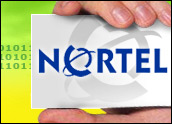
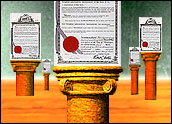

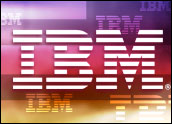
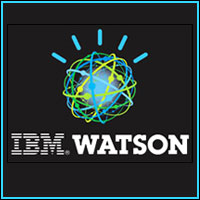
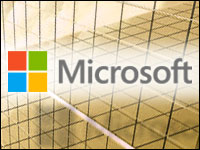
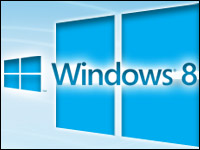
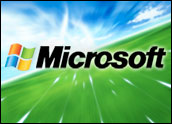
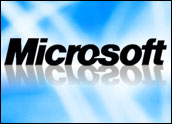
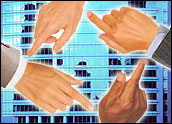
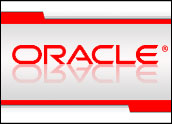
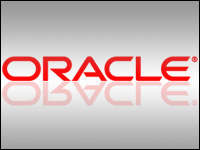

































Social Media
See all Social Media